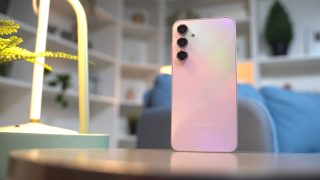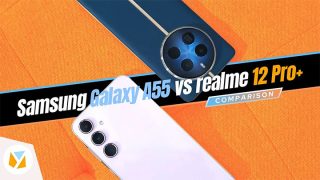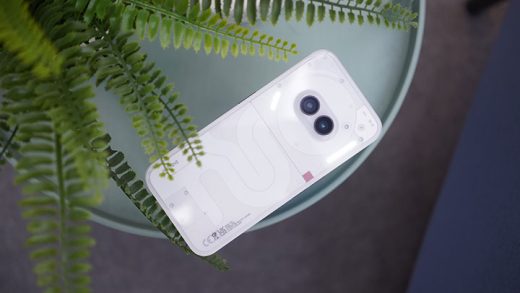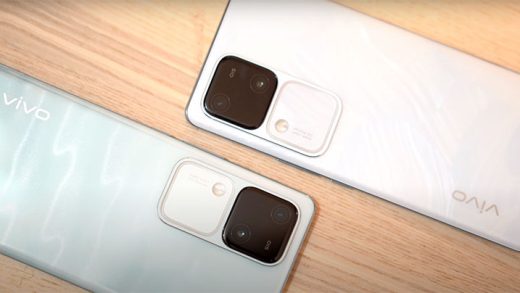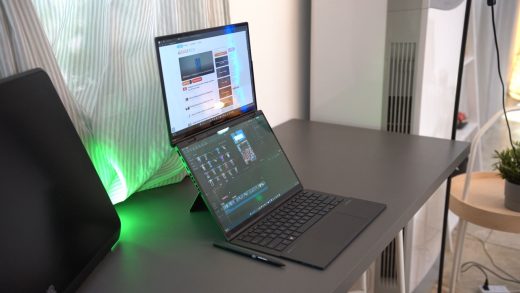The Huawei Vision S Series is one of the newest Smart TVs to arrive in the Philippines. It offers unique features not normally found on typical smart TVs. But is it the one to get right now or should you consider alternatives, like the Samsung QLED 4K Q60T (2020)? We’ll pit the two smart TVs and compare features to find out which one is for you.

Table of Contents
Design
Both TVs feature slim and modern designs, which means thin bezels and stands that would appeal to those who prefer a minimalist look. Both TVs can be placed on a TV console or wanted on a wall. At 55-inches and 65-inches, both devices are pretty large but have small footprints and slim bodies to fit in any living room or bedroom.

Both TVs also come with their own remote controls. The one with the Huawei Vision S is pretty minimalistic with only the essential buttons to aid in navigation but has NFC for its exclusive features. The NFC allows you to simply tap your NFC-enabled smartphone against it for WiFi-free projection. It also has a microphone for AI voice commands such as adjusting brightness, volume, and others. The Samsung QLED 4K Q60T, on the other hand, has the One Remote Control with dedicated buttons for popular video streaming platforms.

One thing that sticks out on the Huawei Vision S is the support for a camera for video calls. The camera attaches to its port via magnets, so you can easily remove it when not in use. We’ll discuss more of its features in a bit.
Display and Audio
The Huawei Vision S Series comes in 55-inch and 65-inch screen sizes, while the Samsung QLED 4K Q60T comes in 50, 55, 65, and 85-inches. But for this comparison, we’re going to pick the 55 and 65-inch models.

The Huawei Vision S Series sports an LCD panel with 4K resolution, 92% DCI-P3 color gamut, 350 nits of brightness, and 5000:1 contrast ratio. It also boasts a 120Hz refresh rate with MEMC (motion estimation and motion compensation) interpolation technology to make low frame-rate content smoother, and Super Resolution Turbo feature to make lower-resolution content look sharper and clearer.

The Samsung QLED 4K Q60T, on the other hand, uses QLED technology or Quantum Dot LED with 4K resolution, 100% DCI-P3 color gamut, Quantum HDR, Mega Contrast, and 60Hz refresh rate, and 4K upscaling.
For audio, the Huawei Vision S Series features Huawei Sound with 4 built-in speakers with Huawei Histen audio algorithms for virtual surround extension, voice enhancement, and sound calibration. It also supports DTS HD and Dolby Audio.
For the Samsung QLED 4K Q60T, it features a 2CH speaker with 20W sound output (RMS) and support for Dolby Digital Plus.
OS and Features

The Huawei Vision S Series runs on HarmonyOS, the company’s OS for IoT devices. This enables the TV to offer features such as Celia voice assistant powered by Huawei AI Voice and 6Mic far-field microphones, Mirror Control to let you use a Huawei smartphone as a touchpad or a gamepad, OneHop Projection so you can instantly mirror your Huawei smartphone to the Huawei Vision S, and Huawei Share so you can wirelessly transfer files like photos, videos, and APKs from your Huawei smartphone to the Huawei Vision S.

For productivity, there’s MeeTime Video using the 13MP Magnetic Camera with support for apps like Zoom and Google Meet, and wireless desktop mode if you want to turn it into an Android-powered PC with the help of a supported Huawei smartphone. This is one of the advantages of the Huawei Vision S over typical smart TVs. Furthermore, it is also compatible with non-Huawei smartphones running on Android 8.0 and up via the Huawei Vision Home App.

The Samsung QLED 4K Q60T, on the other hand, runs on Tizen, which is the company’s own operating system for multiple devices which includes smartphones, tablets, wearables, and automotive infotainment. It supports MultiView, which splits your TV screen in two so you can watch content on one side and mirror your Samsung smartphone o the other side, SmartThings support so it can link with other Samsung IoT devices, Ambient Mode which blends the TVs screen with the background when projecting photos for a gallery effect, and Bixby voice assistant.
While both TVs have smart features, the Huawei Vision S is not just centered on entertainment. It can be a productivity partner to free you from the constraints of smaller screens found on laptops, tablets, or smartphones. With a quick tap, you can immediately view the content on a bigger screen. And given its growing ecosystem, it can work as a central hub of other IoT products that will launch in the future. And since it’s upgradable, you can expect it to be equipped with newer features that will come out of Huawei’s development.
Connectivity
When it comes to connectivity, the Huawei Vision S Series features dual-band WiFi, Bluetooth, 3x HDMI 2.0, AV in, USB 3.0 Type-A, and SPDIF (coaxial). Although it has plenty of wired connectivity, its biggest features are mostly centered around wireless, like Huawei Share and OneHop Projection, as mentioned earlier. So, if you have Huawei smartphones (as well other supported non-Huawei devices), tablets, and laptops, these devices can work together without the need for cables.

The Samsung QLED 4K Q60T, on the other hand, has more to offer with ISDB-T, RF in, WiFi, Bluetooth, 3x HDMI, 2x USB, AV in, Digital Audio Out (Optical), and Ethernet.
Both devices can be connected to Android-powered OTT boxes, even Apple TV.
Price
The Huawei Vision S 55-inch is priced at PHP 36,999, while the 65-inch is at PHP 56,999. It comes with a free SmartBox until September 30, 2021, and free delivery until June 30, 2021. It’s available on Huawei’s online store, Huawei Concept Stores, and major appliance stores like Abenson and AllHome.
The Samsung QLED 4K Q60T, on the other hand, is now priced at PHP 46,999, while the 65-inch is at PHP 69,999. It is available in stores like Abenson, Anson’s, Western Appliances, and SM Appliance.

Given the price differences, we think that going for the Huawei Vision S will provide the most value. Many users would enjoy its capabilities, especially those who are already in the Huawei ecosystem and want to tinker around its features to bring out its full potential.
Those who want to win a Huawei Vision S TV can join Huawei PH’s contest with three units to be given away. Watch the video below for the mechanics:







